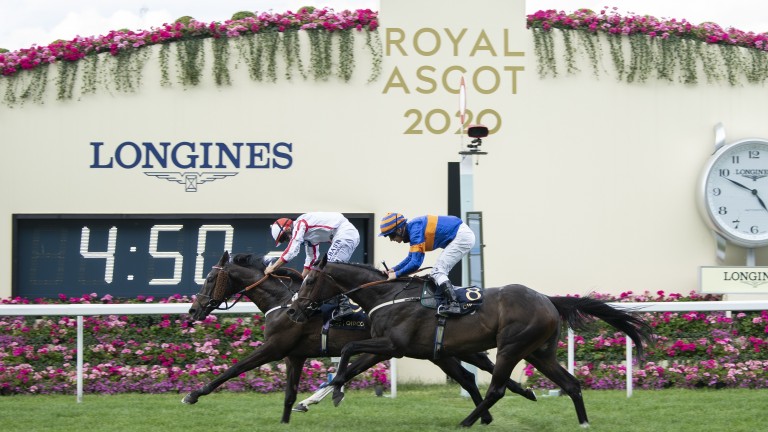Royal Ascot to expand meeting to seven races a day

Ascot will permanently expand its famous royal meeting with the introduction of seven-race cards each day after its revised schedule proved popular with bookmakers and connections last year.
The five-day meeting, which begins on June 15, was expanded last season to facilitate extra runners, whose campaigns were severely interrupted by the coronavirus pandemic before the resumption of racing in England on June 1.
This led to a revised running order and the creation of the Copper Horse Stakes (1m 6f), Palace of Holyroodhouse Stakes (5f) and the Golden Gates Stakes (1m 2f), as well as the restoration of the Buckingham Palace Stakes (7f) which had been scrapped in 2015 after the introduction of the Commonwealth Cup (Gr 1, 6f).
Approved by the Queen, these four races have been permanently added alongside the Kensington Palace Stakes (1m), a new handicap for four-year-old and upwards fillies and mares.
The consolation contests for the Royal Hunt Cup (1m) and Wokingham Stakes (6f), added in 2020, have not been retained. The new races will be run as the final races on each day, excluding Saturday, which will end with the traditional finale of the Queen Alexandra Stakes (2m 6f).
“We had positive feedback from bookmakers and broadcasters, and the Levy board was keen for us to continue the programme,” Nick Smith, Ascot’s director of racing and public affairs, told the Racing Post.
“We also had great responses from connections of horses who ran in the extra races last year. A Royal Ascot winner means a lot and it makes sense to give more people the chance to have a runner.
“Of course, there were some people who felt it would be a shame for the meeting to become too long but seven races a day is still not a very long card and the response was overwhelmingly positive.
“Expanding the meeting was always under consideration. Last year was a needs-must situation, which allowed us to test a new schedule in an environment where it would be universally welcomed. It went well and the arguments against continuing it weren’t that strong.”
On the introduction of the Kensington Palace Stakes, Smith added: “We discussed it with the BHA (British Horseracing Authority) and this looked like a logical race to bring in. There’s a parallel with the Royal Hunt Cup providing an option for runners who are not up to running in the Queen Anne.
“Those that aren’t quite good enough for races like the Duke of Cambridge could look at this as an alternative. The plan is to offer something for as many categories of horses as you can but eventually you do find yourself running out of space.
“Last year was an academic exercise because we were looking for a lot of races but this time we were only really looking for one.”
Prize-money will be confirmed in advance of the early closing races in April and have been listed with holding values based on 2020.
“Things are so uncertain,” said Smith. “Just over a month ago we were beginning our project for the return of crowds over Christmas and suddenly there was a new variant of the virus and a lockdown.
“We don’t really have any idea of when crowds will be able to return and there’s no magic wand in terms of the Levy so we don’t know the levels of prize-money on offer but we’ll obviously do the very best we can and we’re preparing for every eventuality.”
The running order this year will be based on 2019 rather than 2020, when the schedule reflected the late start to the Flat season and rescheduling of the Newmarket and Epsom Classics. The Queen Anne Stakes (Gr 1, 1m), run as the second race last year, will open the meeting.
In a statement on Monday, Smith added: “At this time, more than ever, the increased opportunity to win prize-money and to generate more levy and domestic and overseas betting income is crucial.
“After consultation with the BHA, we decided to remove the two reserve races and bring in another high-quality handicap, as we are actually reducing the number of races run by one from last year, when there were eight races staged on the final day of the meeting.
“Last year’s extended cards were only possible by reducing some field sizes slightly and because no overnight stabling was allowed under Covid-19 protocols. In order that field sizes can go up to their maximums again and with overnight stabling extremely important, we have commissioned extra temporary stabling to be built.
“Royal Ascot is constantly evolving and has benefited from many recent race additions and promotions and we are excited that the week will now be bigger and better for everyone.”
The meeting, which became a royal week in 1911, was extended from four days in 2002 to celebrate the Queen’s Golden Jubilee.


